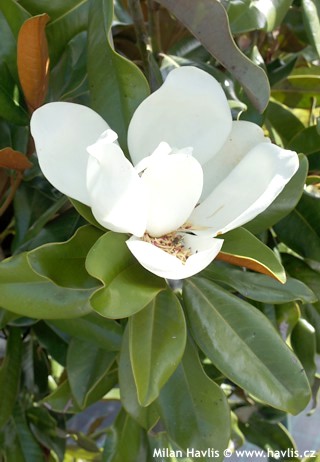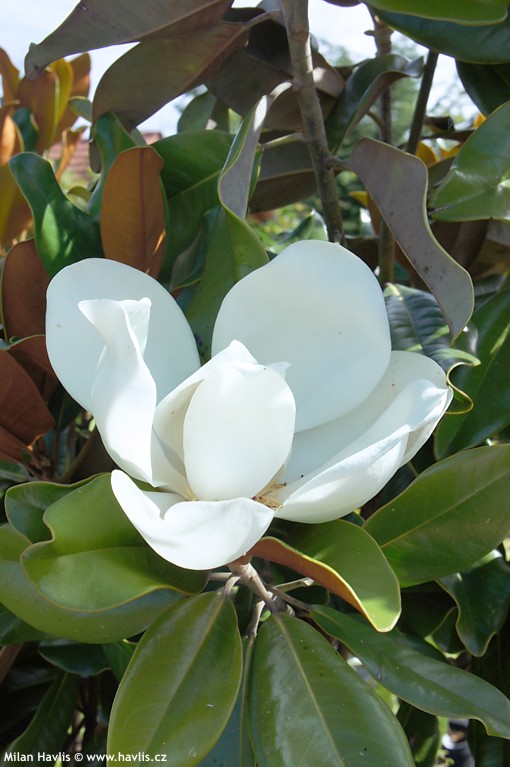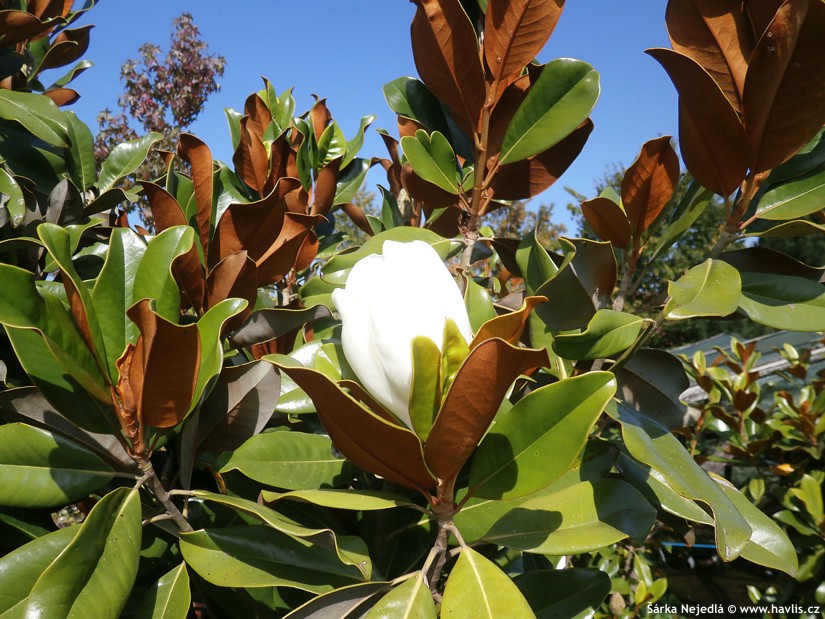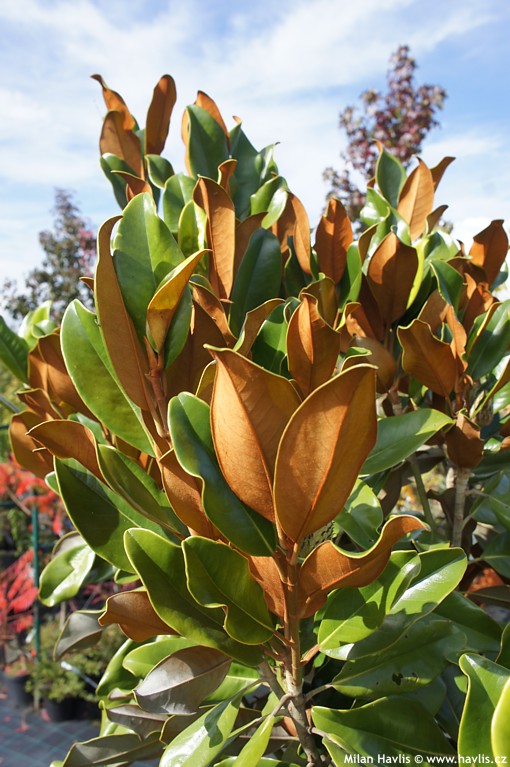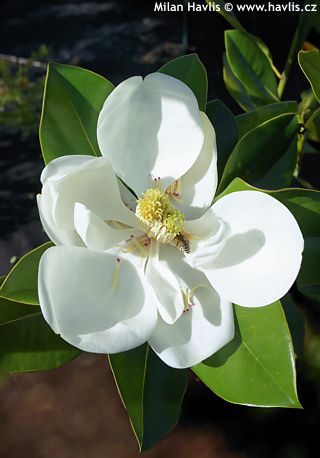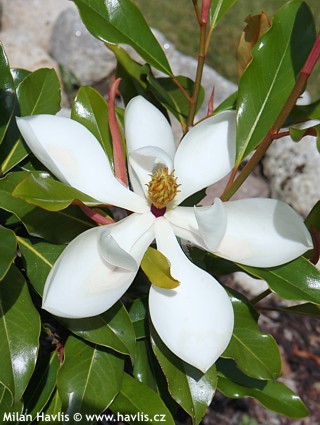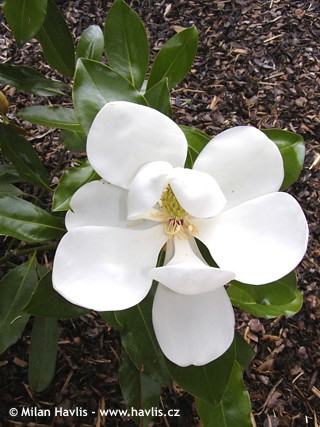Magnolia grandiflora ('Galissonniére Nana') 'NANA' southern magnolia, bull bay


If you fell in love with large, creamy white flowers of bull bay magnolia but unfortunately your garden is too small to accommodate the usual type we have a sensational variety which is a true dwarf. It originated in Italy as a selection of a French very successful variety Galissonniére.
It is called Nana and has everything you would expect from bull bay magnolia, but the size which is limited to some 3m in 20 years (zone 6 and 7). The flowers are creamy white, very fragrant, 20-22 cm across but never open wide enough to show its full size because this magnolia is so densely leaved that there is always at least one leaf that gets in the way. Flowering begins on hot days of June and continues until all buds have flowered which can be as late as September. Since magnolias bloom at the tips of new branches pruning is not recommended. This magnolia grows slowly and densely compact, making a somewhat pyramidal shape when young, changing to rounded with age.
Evergreen leaves are highly glossy, leathery, heavily undulated at margins, dark green on the upper side and covered with suede-like coppery brown idumentum underneath. Such leaves consume a lot of nutrients which are supplied by extensive root system. Therefore, until the plant is fully established (1-3 years from transplanting) it may lose a large number of foliage after transplanting. To prevent that from happening fertilize it regularly for at least 3 years from transplanting using a selective fertilizer for ericaceous or flowering plants.
Find it a location with plenty of direct sunlight in summer, protected from cutting winds. The best place is full sun in summer and shade in winter and early spring. It needs slightly acidic soil, very rich in humus, moist but well-drained.
In colder zones it is recommended to cover the plant in white fleece to keep it from direct sunlight and freezing winds should the temperature drop below -20°C. It is hardy to about -20°C (USDA zone 6b) but withstands short spells of slightly lower temperatures with protection.
Last update 22-09-2014

































